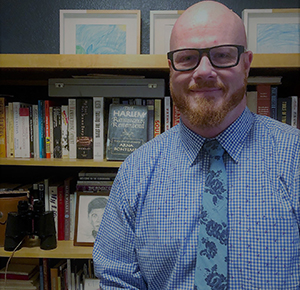
By Mike Kilen
GCU News Bureau
Stephanie Herrick Kays conducted an assessment clinic for nursing students.
To an empty room.
But using Loom video technology, GCU’s Graduate Simulation Manager ran through a simulation of a toddler with an ear infection for students to later view, then access and create a plan of action.
Welcome to instruction in the time of COVID-19, as Grand Canyon University ground students were sent home to finish the final four weeks of the semester in online courses, starting Monday.
GCU expects to be very good at it with its longtime prowess in online instruction.
“We have online full-time faculty here, which isn’t common, and we’ve been doing this for a decade,” said Colin Witherspoon, Faculty Chair of the College of Humanities and Social Sciences and College of Doctoral Studies. “Nobody else is on that same playing field.
“And it’s not just a matter of using these tools of technology. We have tested the tools and researched the tools.”
GCU is quickly using its expertise in instruction of more than 80,000 online students to help faculty teach its 22,000 traditional ground students.
Kays assisted the College of Nursing’s transition with tools she has used for online students. The Loom video of the simulation allows students to make an assessment and get feedback from instructors.
“Our students are getting some of the experience in clinical, and it doesn’t put them behind,” Kays said. “I’m really impressed with the College of Nursing, how we flipped everything online in less than no time.”
Teaching online requires some adjustments. Kays noticed at first that students learning online can be “rougher around the edges” than they would be in a classroom, so she brings in the personal touch with video messages.
“I make them acknowledge my weekly announcements. I start with a prayer and tell them what is going on. Bringing in prayers puts a name to a face,” she said. “They can see you are happy for them, you prayed with them. Then they aren’t as rough around the edges.”
She learned of the use of Loom through a course with Dr. Seanan Kelly, Assistant Professor in the College of Doctoral Studies and an expert in online instruction.
Kelly shared links to his tips on online teaching with GCU faculty and has fielded questions from other colleges that are in the same boat in the past week.
“GCU has been at the forefront in its investment in technology. We are at a time when that investment allows us to function, quite literally,” he said.
He has made roughly 1,900 videos on Loom, he said. His link demonstrates for other teachers how they can provide traditional lectures – what he calls “fireside chats” – but switch screens to allow for other materials on the screen or use both at once with his face minimized while talking about the content.
Kelly also can use Loom to assess a student’s paper, for example, by easily flipping from page one to page five to make his point. It can be a learner advantage.

“If they had read my comments on paper, in a linear fashion, they may not have fit it together in a logical way. They can follow along like the old Disney books – change the page when you hear the bell,” he said. “You can have aural and visual cues on the page.”
He acknowledges it could be difficult for some classroom teachers at first.
“Teaching, in my opinion, is sometimes theater. You have an audience and it’s one of the beautiful things about being in front of the classroom. It’s your stage, and you feel part of something bigger than yourself because there is an exchange,” he said. “But they shouldn’t feel like they have to put everything aside in their arsenal; they can bring every tool in their arsenal to this.”
The biggest challenge is adding a human element to teaching that is natural in face-to-face instruction, Witherspoon said. “Loom video is a great way to add that human voice. That is something we have tried to emphasize, and now it has a whole new purpose because of these strange times.”
The video messages allow instructors to edit content for mistakes and distill it down into smaller segments.
That’s what Trevor Dustin already has learned in adapting his English courses to online instruction. Last week, he recorded a short, weekly summation of what to expect in the coming week – with a human voice, not just a list on a page.
“I make sure my videos are under 10 minutes. It’s hard enough to get students to listen in a classroom, and now you have removed the structures that keep them engaged. So I put them in short chunks,” said Dustin, who instructs Honors College students.
It’s the same way he would communicate in class, offering subjects in blocks, only the discussion is “asynchronous,” he said.
Anyone can move a class online and just drone on with a lecture, but to do it well requires moving to an online modality, using all the tools of technology to your advantage that have long been tested at GCU. College of Education faculty report using many Web tools learned in past faculty conferences, such as Flipgrid, Zoom, Remind messaging, Edpuzzle and Loom.
“Students can read articles all day, but there’s that personal connection of someone’s voice in their house,” Dustin said. “The first thing I did was go to an article on why we canceled (in-person) classes and said, ‘Not to fear monger, but you are doing this to protect the community.’”
Grand Canyon University senior writer Mike Kilen can be reached at [email protected] or at 602-639-6764.















